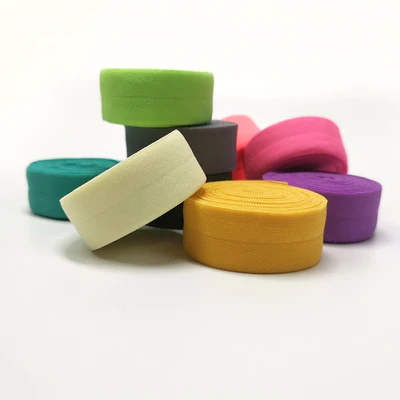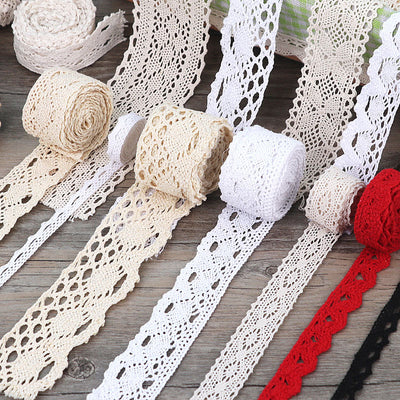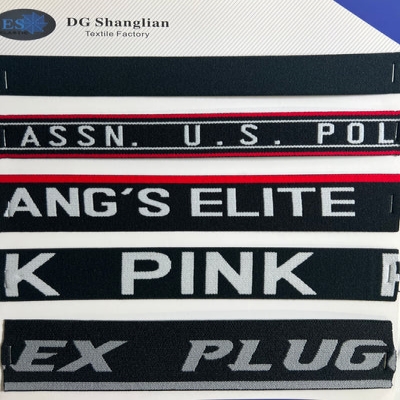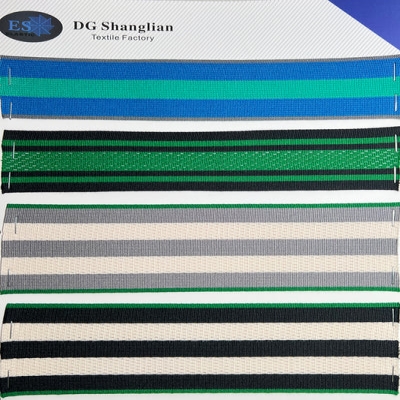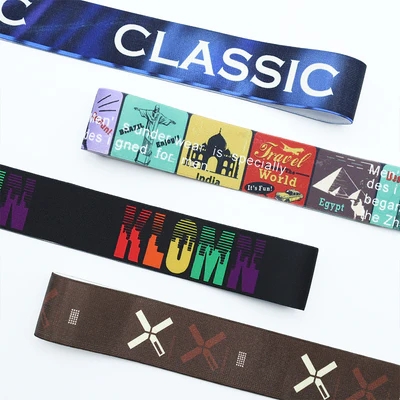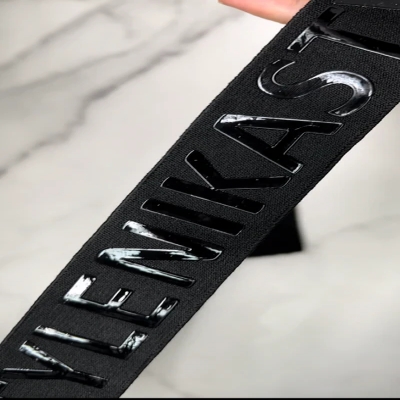Elastic bands are an indispensable elastic material in daily life and industrial production. Whether it is clothing production, luggage design, or medical, automotive, household goods and other fields, elastic bands play an important role. However, do you really understand the types, materials and application scenarios of elastic bands? When purchasing elastic bands, how should you choose the product that best suits your needs?
This article will comprehensively analyze the classification, use and purchase skills of elastic bands to help you quickly master all the knowledge about elastic bands!
Selecting a trusted elastic band factory ensures product consistency and durability
Main Categories of Elastic Bands
Classification by Material
The material of the elastic band determines its elasticity, feel and durability, mainly including:
Rubber elastic band
-
Features: Made of natural rubber or synthetic rubber, strong elasticity and good resilience.
-
Application: Commonly used in clothing, underwear, medical bandages, etc.
Spandex elastic band
-
Features: Made of spandex fiber (Spandex), excellent elasticity, strong durability, not easy to age.
-
Application: Widely used in sportswear, yoga pants, swimwear and other products with high elasticity requirements.
Polyester elastic band
-
Features: Made of polyester fiber, wear-resistant, good waterproof, moderate elasticity.
-
Application: Suitable for shoes and hats, outdoor equipment, bags, etc.
Nylon elastic band
-
Features: soft and smooth, moderate elasticity, high strength, good durability.
-
Application: Mostly used in high-end clothing, underwear, sportswear, etc.
Classification by Structure
The weaving method of elastic band determines its appearance, feel and service life. There are mainly the following structures:
Woven Elastic
-
Features: Woven by textile machine, thick, elastic, able to withstand large tensile force.
-
Application: used for belts, medical bandages, industrial fixing belts, etc.
Knitted Elastic
-
Features: Made by knitting technology, soft texture, moderate elasticity, good breathability.
-
Application: suitable for underwear, underwear, children's clothing, etc.
Braided Elastic
-
Features: Made by interlacing multiple yarns, thin but elastic, the width will shrink after stretching.
-
Application: used for sportswear, elastic waistband, handicrafts, etc.
The Main Application Scenarios of Elastic Bands
Elastic band is a kind of elastic webbing, which is widely used in many industries, including clothing, luggage, medical treatment, sporting goods, etc. The following are its main application scenarios:
1. Clothing industry
-
Waistbands: Elastic bands are widely used in the waist design of sports pants, casual pants, maternity clothes, etc., providing a comfortable and fitting wearing experience.
-
Underwear and socks: Used for bra base, underwear waist, sock cuffs, etc. to ensure fit and comfort.
-
Cuffs and trouser legs: Use elastic bands at the cuffs or trouser legs of jackets, sportswear, work clothes and other clothing to enhance wrapping and prevent cold wind from entering.
-
Children's clothing: Children's clothing often uses elastic bands to meet the needs of different body shapes and improve the convenience of wearing and taking off.
2. Luggage industry
-
Backpack shoulder straps: Some backpacks use elastic bands on their shoulder straps to increase comfort or fix additional items.
-
Luggage fixing straps: Luggage is often equipped with elastic fixing straps inside to prevent items from moving during transportation.
-
Storage bags and drawstring bags: Used in drawstring backpacks, travel storage bags, etc., to facilitate opening and closing and keep a tight seal.
3. Medical industry
-
Medical masks: elastic bands are an important part of the mask ear hooks, ensuring comfortable wearing and not easy to slip off.
-
Elastic bandages: used to bandage the injured part, provide moderate pressure, and promote wound healing.
-
Surgical clothing and protective clothing: elastic bands are used on cuffs, trouser legs, waist and other parts to improve sealing and facilitate wearing and taking off.
-
Medical fixation belts: used to fix medical equipment such as catheters and infusion tubes to ensure stability.
4. Sporting goods industry
-
Sports protective gear: such as knee pads, wrist guards, ankle guards, etc., elastic bands provide support and protection to avoid sports injuries.
-
Sportswear: yoga pants, fitness clothes, etc. usually use elastic belts to improve comfort and flexibility.
-
Headbands and wristbands: sports headbands and wristbands have built-in elastic bands to ensure a secure fit and prevent sweat from flowing into the eyes or hands.
-
Footwear: elastic shoelaces or elastic shoe openings are designed to improve the convenience of wearing and taking off, which is commonly seen in sports shoes, casual shoes, etc.
In summary, elastic bands play an important role in the clothing, luggage, medical and sporting goods industries due to their high elasticity, comfort and practicality, and are constantly expanding into new application areas with the advancement of materials and technology.
How to Choose High Quality Elastic Band?
When purchasing elastic bands, you need to consider factors such as material, elasticity, and durability to ensure their effectiveness and lifespan. Here is a detailed guide to purchasing:
1. Material
The material of the elastic band directly affects its comfort and durability. Common materials include:
-
Rubber (natural or synthetic): has good elasticity and durability, suitable for high-strength applications such as sportswear, medical supplies, etc.
-
Spandex: Excellent elasticity, usually mixed with other fibers such as polyester or cotton, used in the clothing industry.
-
Polyester: wear-resistant and durable, strong anti-aging, suitable for elastic bands for long-term use.
-
Cotton: soft and breathable, suitable for close-fitting clothing such as underwear, maternity clothes, etc.
Purchase advice: Choose the right material according to the purpose. For example, high-elastic spandex + polyester is recommended for sportswear, and cotton blends are recommended for close-fitting clothing.
2. Elasticity
The quality of elasticity determines the comfort and recovery ability of the elastic band. High-quality elastic bands should have:
-
Good resilience: can quickly return to its original shape after stretching, and is not easy to relax and deform.
-
Moderate stretching force: neither too tight to affect comfort, nor too loose to cause unstable fixation.
Purchase suggestions: Stretch the elastic band several times to see if it can rebound quickly without obvious deformation, and avoid choosing products that are too tight or too loose.
3. Durability
Durability determines the service life of the elastic band, which is mainly affected by the following factors:
-
Abrasion resistance: Elastic bands made of high-strength fibers (such as polyester) are more durable and suitable for long-term use.
-
Aging resistance: High-quality rubber or spandex components can enhance aging resistance and reduce hardening or brittle cracking after long-term use.
-
Washability: It can still maintain elasticity after multiple washings and is not easy to deform or break.
Purchase suggestions: Check the product description and choose elastic bands marked with washability and aging resistance to avoid rapid aging caused by inferior materials.
4. Additional considerations
-
Width and thickness: Choose the appropriate width and thickness according to the purpose, such as thin elastic bands are suitable for light clothing, and wide elastic bands are suitable for trouser waists, medical supplies, etc.
-
Environmental protection and safety: Elastic bands for babies or sensitive skin should be non-toxic and harmless and meet safety standards, such as OEKO-TEX certified materials.
-
Sewing process: Observe whether the edges of the elastic band are neat and burr-free to ensure that they will not cause discomfort to the skin when used.
When choosing high-quality elastic bands, you need to consider factors such as material, elasticity, and durability. Different materials are suitable for different uses. For example, spandex is preferred for sportswear, cotton is selected for underwear, and polyester is suitable for high wear resistance. When purchasing, you can ensure the quality by tensile testing, checking washability, and choosing safety certified products.
To find manufacturers, read Top 10 Elastic Band Manufacturers and Suppliers 2025
Precautions for the Maintenance and Use of Elastic Bands
Elastic bands are widely used in clothing, household goods, sports equipment and other fields. In order to extend their service life, the following aspects are crucial:
1. Correct cleaning method
-
Avoid high-temperature washing: The main components of elastic bands are usually rubber silk and synthetic fibers. High temperature can easily cause them to age, harden or even break. It is recommended to use warm water below 30°C for washing.
-
Hand washing is better: Try to avoid machine washing. It is recommended to use mild neutral detergent for hand washing to reduce stretching and friction damage.
-
Gently rub: Do not wring or pull hard to avoid damaging the internal elastic structure.
2. Reasonable storage method
-
Avoid direct sunlight: Long-term exposure to ultraviolet rays will cause elastic bands to age and lose elasticity. They should be stored in a cool and dry place.
-
Avoid high temperature and humidity: Rubber and elastic fibers are prone to deformation or mold in high temperature or humid environments. It is recommended to store them in a well-ventilated place.
-
Prevent heavy pressure: Do not fold or press heavy objects during storage to prevent permanent deformation or breakage.
3. Correct use method
-
Avoid overstretching: Although elastic bands are elastic, if they are overstretched for a long time, they will cause elastic fatigue and shorten their service life.
-
Uniform force: Avoid excessive force on a single point during sewing or use. It is recommended to evenly distribute the tension to prevent local breakage.
-
Avoid frequent pulling: Frequent and severe stretching, especially in clothing and strapping applications, will accelerate aging.
4. Choose high-quality elastic bands
-
Choose the right material according to the purpose: Elastic bands for different purposes are made of different materials. For example, elastic bands for clothing should be made of soft and washable materials, while elastic bands for industrial or sports equipment should have higher durability and strength.
-
Check the quality: Before use, check whether the elastic band is uniform in elasticity, whether there is breakage, relaxation or wear. Poor-quality elastic bands are prone to breakage or loss of elasticity.
Through these maintenance and use tips, the service life of the elastic band can be effectively extended to keep it in good elasticity and performance.
Conclusion: The Versatility and Wide Application of Elastic Bands
As an elastic material, elastic band plays an irreplaceable role in many fields such as clothing, medical treatment, industry, and home furnishing. It not only improves the comfort and practicality of the product, but also provides convenient solutions in different scenarios. With the development of technology, the material and design of elastic bands are also constantly innovating to meet the market demand for high-quality, environmentally friendly and multifunctional products. Whether in daily life or in the professional field, the flexibility and durability of elastic bands make it one of the indispensable auxiliary materials.
Choose high-quality elastic bands to make comfort and practicality coexist!
Feel free to contact us for the best elastic band solution


